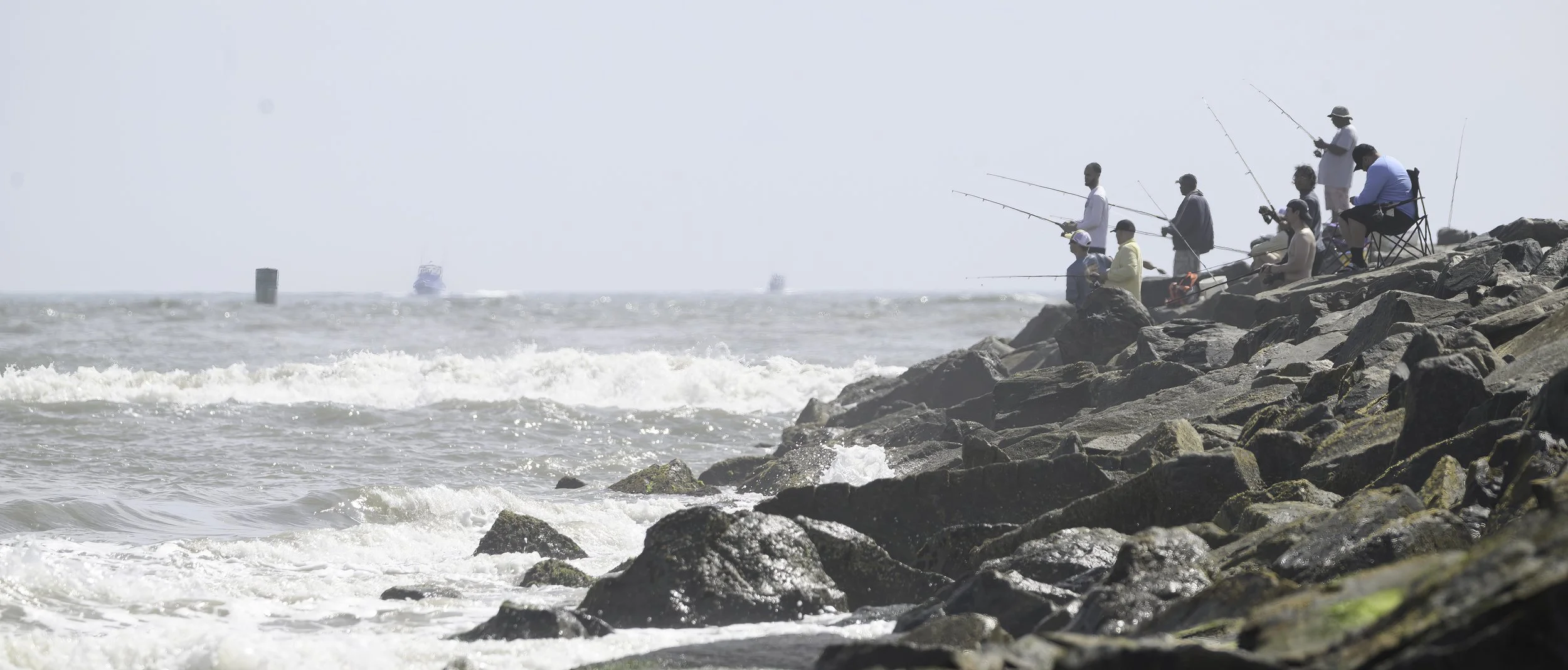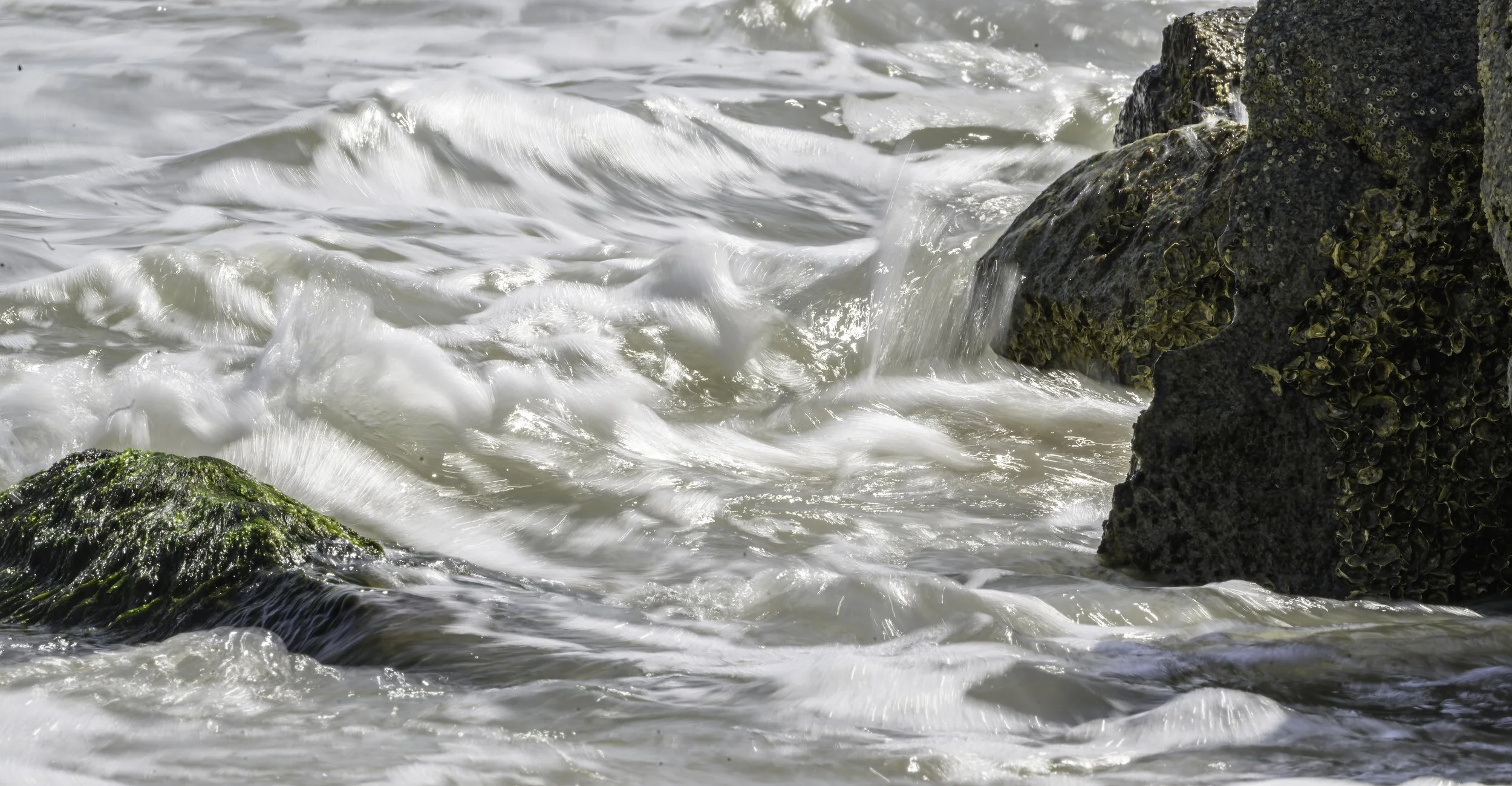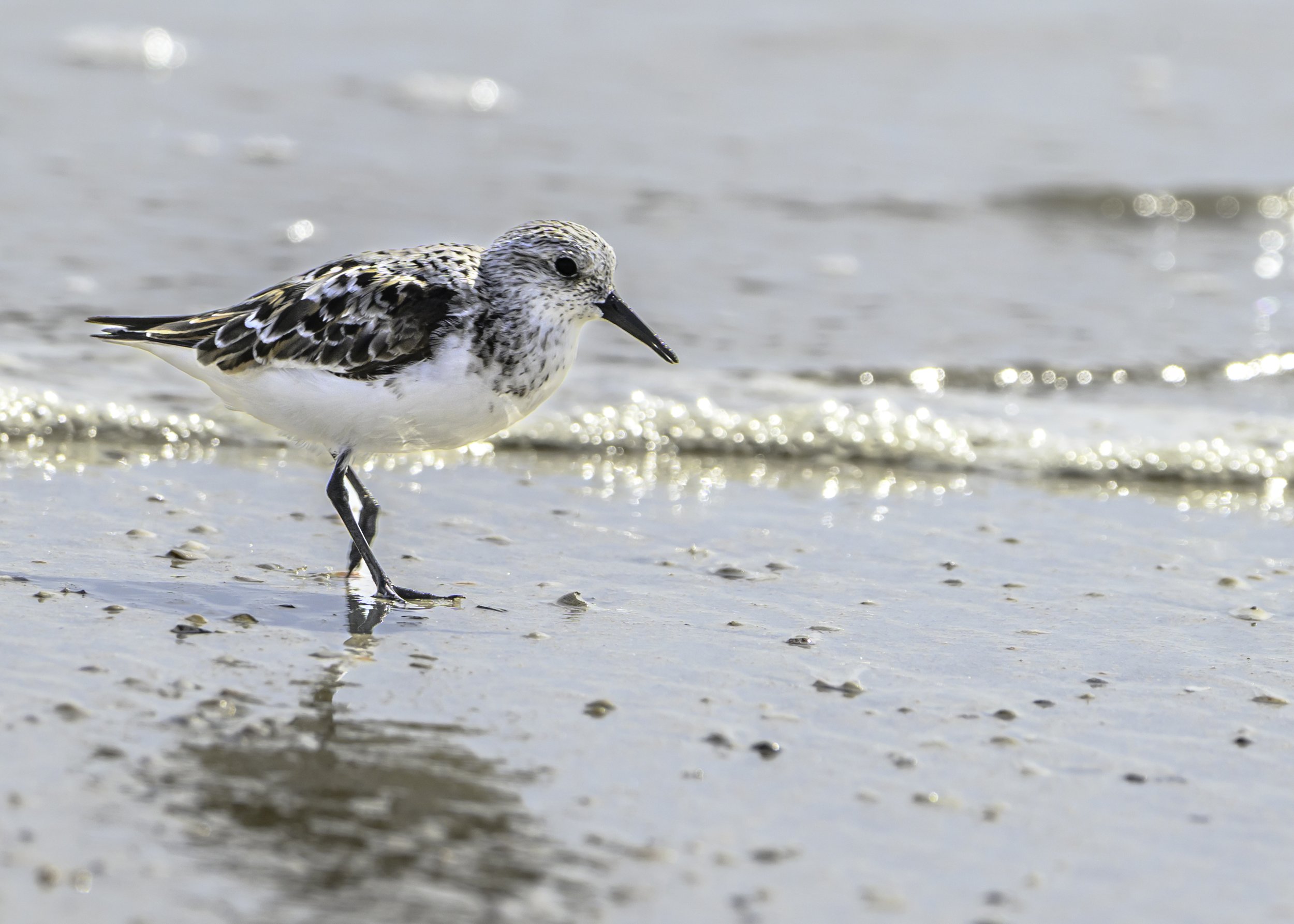Parting shots 1….
One week left for some final Florida nature shots before we head north. My first run will be to the jetty at Smyrna Dunes Park. Ponce Inlet is a hotspot for fishing as is seen above, and the human fishtermen are not the only type of fauna that congregate here to take advantage of nature’s bounty. I’m hoping to find a couple of new species which should be showing up near the inlet during this time of year…the Common tern and the Least tern. Unfortunately, I was not able to find a single tern of any species here today. No reasons for them not to be here other than they chose not to be! Other venues might be offering more advantageous hunting for prey. Regardless, there is still more to check up on here at the jetty.
Wave action at the jetty, Nikon Z9 with Z180-600mm 380mm, 1/20 sec, f/36, ISO 90
The incoming waves as well as tidal action and the flow of water out of the Indian and Halifax Rivers at this point make it especially rich in bait fish, crustaceans, and seaweed clinging to the rocks of the jetty. The action of the waves rushes into little pools where the sandy beach meets the rocks of the jetty and the birds who frequent this area know that this is a fine place to find an easy meal. One of the most reliable birds you’ll find here at the jetty is the Ruddy turnstone. The Turnstones will be seen scouring the wet sands where small fish, molluscs and crustaceans like sand crabs as well as annelids (worms) carried in by the waves and normally buried under a find layer of sediment. The Ruddies are masters at flipping over any stones, clumps of vegetation, or other debris to find what riches the sandy beach is harboring.
While the turnstones are busy searching for treats beneath the sand and seaweed, the Snowy egrets are keeping tabs on the small fish which the waves have carried into the shallows. It is not uncommon to find the two species hunting side by side in perfect harmony. While the Snowies are known to have an occasional spat when another gets to close to what is “their” fishing grounds, they seem to tolerate the turnstones probably because they are looking for different fare.
The old adage of “birds of a feather “ does seem to hold here to a degree as you will find other small shorebirds plying the waveline for juicy morsels but generally keeping to their own. Sanderlings are well known to anyone who spends any time on these beaches as they are present during all seasons here in Florida.
Sanderlings are usually found scurrying in and out of the wash from the waves coming up onto the shore in search of whatever happens to be carried along by the action of the inflowing water. For most of the year, the sanderling is a very light colored little shorebird with a bit of a smudge of black on the shoulder which may or may not be seen. During a brief time during the spring, however, they will develop a darker richer coloring on the head and breast. The bird I photographed here is going into that very plumage and will only carry this coloration for a brief time during its breeding cycle. And so, my parting shots of the birds on the jetty indicate that spring is here and the cycle of change is well under way.
Tech Tip - When trying to capture the essence of a moving body of water, like the wave action in the second shot of today’s post, it is necessary to make a long exposure. The exposure I used here was 1/20 of a second, and I would have preferred to use a bit longer exposure of up to a full second or two. The problem was, it was a very bright day and i’m photographing the water which is reflecting the sun’s light, so the camera could only go so slow without overexposing the scene and “washing out” the entire picture. If I had planned ahead for this shot, I would have used a “ND” or neutral density filter to block out much of the light coming into the camera. With that filter, I could expose the shot for much longer without the risk on “overexposure”. One of the problems with photographing nature is you are in the field and are limited to using the gear that you bring. So, I laid the camera on the rocks of the jetty, and checking the light meter, took the longest exposure with the smallest aperture that the camera would allow. Sometimes you just have to make do with what is at hand.




